calsfoundation@cals.org
Henry Yuzuru Sugimoto (1900–1990)
Henry Yuzuru Sugimoto was a noted artist whose paintings chronicled the immigrant experience, including the time he and his family spent in internment camps in southern Arkansas during World War II.
Henry Sugimoto was born as Yuzuru Sugimoto on March 12, 1900, in Wakayama Prefecture, Japan. When he was a baby, his father moved to California to seek employment. Nine years later, his mother joined his father in California, leaving Sugimoto and a younger brother in the care of her parents. Sugimoto’s maternal grandfather had been a samurai and still owned many artworks, which Sugimoto copied with his grandfather’s encouragement. In 1919, Sugimoto’s parents finally could afford to bring him to America. He joined his parents in Hanford, California, and changed his name to Henry.
After graduating from Hanford Union High School in June 1924, Sugimoto moved to the San Francisco Bay area, where he studied at the California College of Arts and Crafts and the California School of Fine Arts (now the San Francisco Art Institute). In 1928, he went to France to study at the Académie Colarossi in Paris. His paintings were already influenced by Paul Cézanne and other French post-Impressionist painters.
While in France, Sugimoto attended the Académie Colarossi and created over 200 paintings, solidifying his style and detailing the unique features of the California coast. In 1932, Sugimoto returned to America because of the pleas of his parents, who needed his financial support during the Great Depression. After his return, he was invited to do a one-person exhibit at the California Palace of the Legion of Honor in San Francisco, and his career began to take off. On April 24, 1934, Sugimoto married his longtime sweetheart, Susie Tagawa, in Hanford. They had two children: Madeleine Sumile, who was born in 1936, and Phillip, born in 1949.
In 1942, Sugimoto and his family were among the thousands of other people of Japanese ancestry who were relocated by the U.S. government to internment camps in response to the widespread fear that Japanese Americans were possible threats to American security after the Japanese attack on Pearl Harbor on December 7, 1941. The Sugimotos were sent first to Arkansas’s Jerome Relocation Center, arriving in October 1942. When the Jerome camp was closed in June 1944, the Sugimotos were moved to the Rohwer camp, where they stayed until August 1945. This incarceration was a defining experience in Sugimoto’s life. While interned, Sugimoto created about 100 paintings; for the first time, people and social situations became the major subjects of his work. Sugimoto also served during this time as art consultant to the War Relocation Authority; he taught art at Denson High School during the 1943–44 school year.
Sugimoto’s earlier work stressed buildings and landscapes, although a visit to Mexico in 1939 drew his attention more to depicting people and their situations. While he was in the relocation camps, his drawings and paintings increasingly depicted his family and neighbors, and for the rest of his career, Sugimoto continued to portray his memories of those three years. One of his most famous works is When Can We Go Home?, which portrays a Japanese mother and daughter surrounded by scenes of the relocation camp. A series of woodblock prints, created in 1965, depicts many stages in the lives of Japanese citizens of the United States during World War II. Sugimoto’s later work depicted people and scenery in brighter colors than his early work, but his paintings and drawings always maintained a realistic and detailed portrait of his subjects.
Leaving Arkansas in the summer of 1945, Sugimoto and his wife and daughter moved to New York City, which remained his home for the rest of his life. From 1945 on, Sugimoto’s paintings began to examine the relationship of Japanese immigrants to their adopted country and vice versa. While the indignity of his time in the internment camps deeply affected Sugimoto, it also strengthened his belief in the ideals upon which America was founded, and he became a naturalized citizen in 1952. Sugimoto lived the last twenty years of his life in Harlem, New York, working as an artist and fabric designer, continuing to paint until his death on May 8, 1990. His works are included in the collections of the Smithsonian Institution in Washington DC and the Japanese American National Museum in Los Angeles, California.
For additional information:
Falk, Peter Hastings, ed. Who Was Who in American Art 1564–1975. Madison, CT: Sound View Press, 1999.
Francis, Eric, “Japanese Art: Work Inspired by America’s Shame.” New York Times. March 28, 200l, pp. 1B–2B.
Kim, Kristine. Henry Sugimoto: Painting an American Experience. Berkeley, CA: Heyday Books, 2000.
Peacock, Leslie Newell. “Sugimoto in Jerome.” Arkansas Times. September 30, 2004, p. 25.
Weinraub, Bernard. “Japanese-American Gloom on Canvas, Circa ’42.” New York Times. March 28, 2001, pp. 1E–2E.
Erin Branham
Arkansas Arts Center
Staff of the CALS Encyclopedia of Arkansas
 Arts, Culture, and Entertainment
Arts, Culture, and Entertainment Vogel, Mabel Rose Jamison (Jamie)
Vogel, Mabel Rose Jamison (Jamie) World War II through the Faubus Era, 1941 through 1967
World War II through the Faubus Era, 1941 through 1967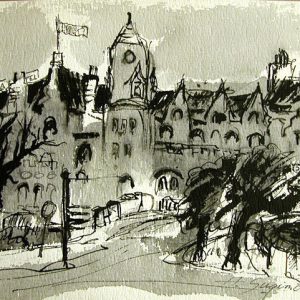 American Hotel
American Hotel 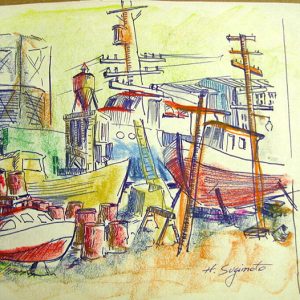 Boatyard
Boatyard 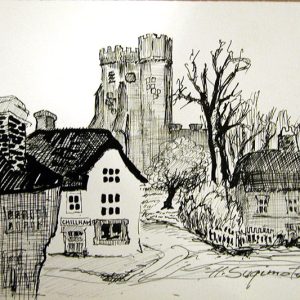 Chillham Building
Chillham Building 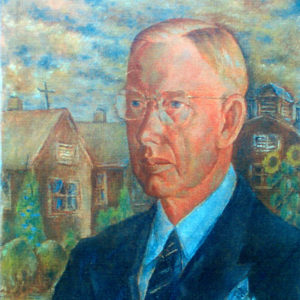 Joseph Hunter, portrait by Henry Sugimoto
Joseph Hunter, portrait by Henry Sugimoto 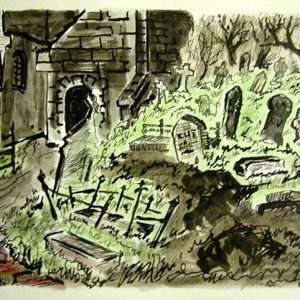 Tideswell Graveyard
Tideswell Graveyard 




Comments
No comments on this entry yet.